For the foreseeable future I will publish once a week on Mondays.
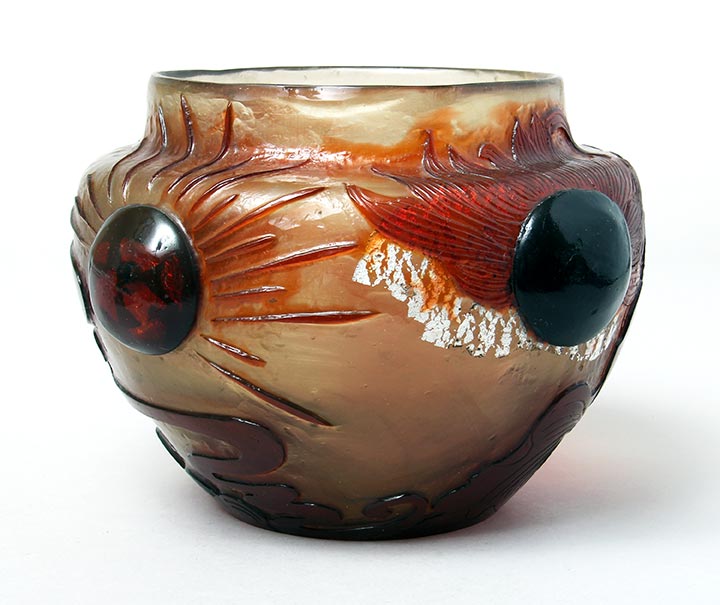
One cabochon is the sun with acid-etched rays and the other is the center of a flower
Occasionally I sell a French cameo vase that is worthy of discussion. Today’s Gallé vase is quite interesting, incorporating a variety of techniques.
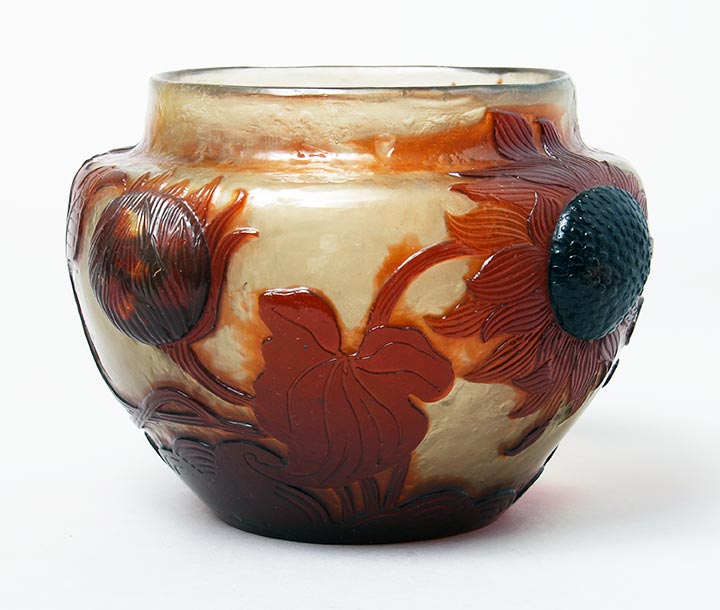
Notice the cabochons on this side of the vase are acid-etched
First notice the vase is transparent. That immediately tells you the vase is early Gallé, from the Cristallerie period in the 1880s-1890s. Then look at the giant applied cabochons, four in all, all different. One cabochon represents the sun, with acid-etched rays surrounding it. The others are the centers of flowers.
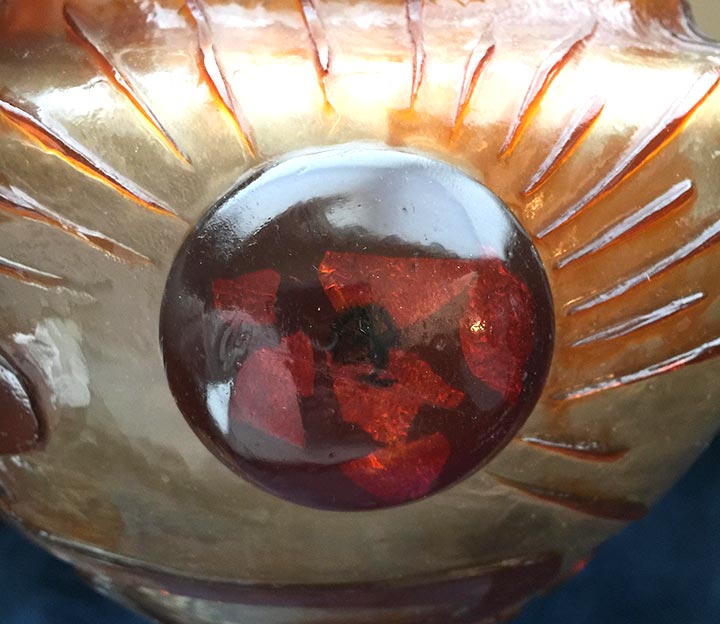
The “sun” cabochon has internal foil decoration, but no acid-etching
It’s interesting to note the presence of metal foil within the glass. How did they do that? There was only one way. As the molten vase was being formed on a punty (the metal rod used to hold the vase), the metal foil was applied to the outside of the vase. While still hot, more transparent glass was applied over the entire vase, encasing the foil. Now it was inside.
Wait, there’s more. The vase was then rolled in powdered, colored glass on the marver (usually a flat metal table) several times and heated in the furnace between each application. This added a uniform colored layer of glass to the outside. Finally heated glass discs (the cabochons) were applied to the outside. Then the vase was ready for the annealing oven, where it cooled slowly over the course of a full day or more.
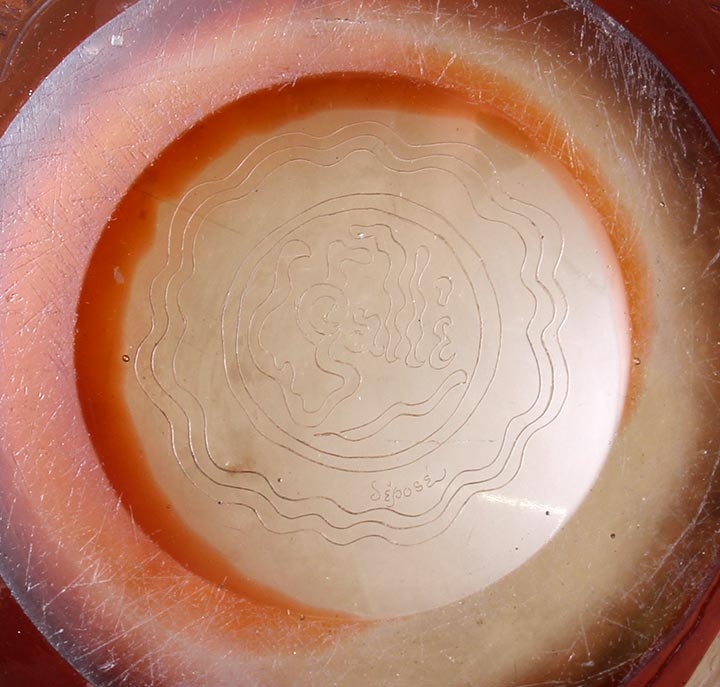
This is a fancy, acid-etched Gallé signature only found on early vases
We’re not finished as there’s no design on the vase yet. So it went to an artist who covered the vase with a resist (a waxy substance or other acid-resistant covering like bituminous paint). The vase then went into a tank of hydrofluoric acid, where the unprotected glass was eaten away. Voila, the vase then had a design, but was still unfinished.
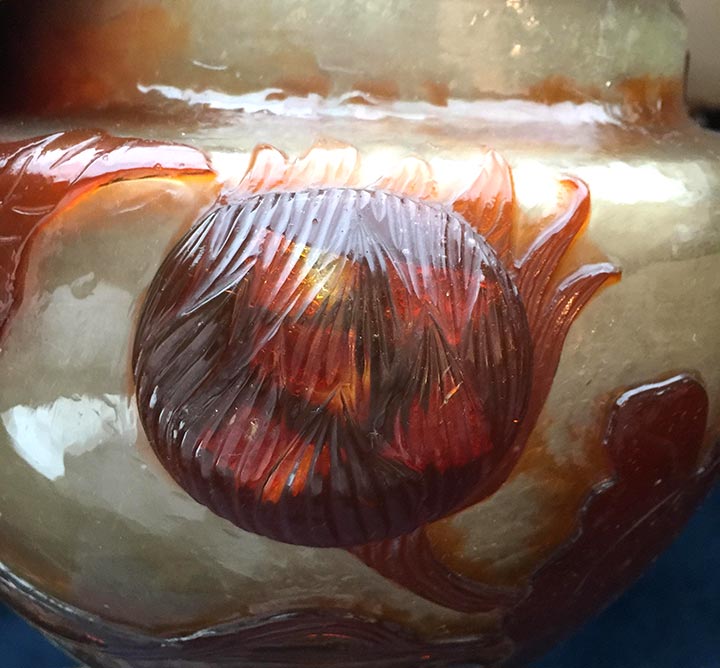
Notice the wheel-carving in the background on the left, the internal foil and the acid-etching of the cabochon
The flaws in the background were removed by wheel-carving. (You can see the wheel marks when turning the vase in reflected light.) The very last step was to heat the outside of the vase with a broad flame. This technique is called fire-polishing and gave a shine to the exterior. The vase was finished and I’m tired just thinking about it!
I hope now you have a better understanding and appreciation of all the time and effort that went into this special vase.
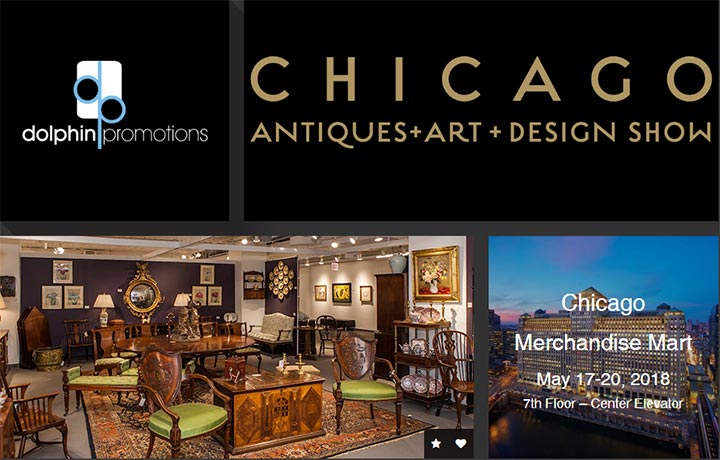 Our next show is not until May 18-20, 2018, when we’ll exhibit at the 2nd edition of the resurrected Chicago Antiques + Art + Design Show at the Chicago Merchandise Mart. It’s a wonderful venue for a show that deserved to be restored from purgatory.
Our next show is not until May 18-20, 2018, when we’ll exhibit at the 2nd edition of the resurrected Chicago Antiques + Art + Design Show at the Chicago Merchandise Mart. It’s a wonderful venue for a show that deserved to be restored from purgatory.
We’re still very much in business between shows, so please don’t hesitate to email or call. I recently listed some of the new items on my website and will list more every week. Click Philip Chasen Antiques to take a look. I will make every effort to actively list new items as often as time permits. I always strive to offer the finest objects for sale on my website and at every show. There are many items for sale, sold items with prices and free lessons about glass and lamps. And remember to keep reading my blog.

Hello Phillip , this is Grant from Ontario , Canada , I guess you can say that I’m a seasoned antique and decorative arts professional in the GTA , but I certainly don’t know everything and Galle glass is still one of my weakest areas. You just don’t get to see much of it out here .
Anyways , I would like to ask just how rare are Cabonchon Galle vases and what is their price range ” in general “. for undamged real examples obviously .
rsvp